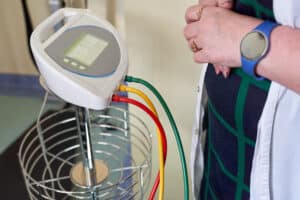
Understanding Peripheral Artery Disease
Peripheral artery disease is a circulatory disease. It develops when the blood and nutrients that are necessary for tissue health in the lower extremities are not sufficiently delivered due to poor cardiovascular activity. Usually, the symptoms of PAD are seen in the feet and lower legs. However, they can occur in other limbs. Blood is circulated to the entire body through a network of arteries. PAD could result from a blockage in the arteries that is preventing adequate circulation to the farthest extremities from the heart. The most common blockage is arterial plaque, a biofilm that sticks to the walls of arteries. It is composed of fatty deposits, cholesterol, and calcium buildup.
Factors that can contribute to the onset of peripheral artery disease include:
- Lack of exercise.
- An unhealthy diet that is high in fatty foods.
- Smoking.
- Diabetes.
- Obesity.
- Age. PAD is usually diagnosed in adults over age 50.
Identifying the Symptoms of PAD
The symptoms of peripheral artery disease can range from mild to severe. They include:
- Skin discoloration in the leg or foot
- Leg pain, especially in the calves
- Slower toenail or hair growth
- Constant coldness, only one leg or foot
- Leg cramps while sitting or standing
- Open leg sores that fail to heal
Treating Peripheral Artery Disease
The symptoms of PAD should not go untreated. However, patients with mild symptoms may be able to improve their comfort with conservative remedies. Primary recommendations include cleaning up the diet. Avoiding processed foods, fatty foods, and high-sugar foods can lead to weight loss, better insulin regulation, and a reduced risk of arterial plaque. Adults interested in reversing PAD are also advised to exercise regularly. Walking daily for 45 minutes has been shown to help reduce cholesterol and also manage a healthy weight. Patients with peripheral artery disease should not smoke, and may take prescription medication to help manage their symptoms and slow the progression of the disease. If conservative remedies do not improve symptoms, a vascular specialist may perform a minimally invasive procedure to restore better circulation to the affected extremities.
Feel better sooner with formal PAD treatment. Call 703-763-5224 to schedule your consultation at the Vascular Institute of Virginia. Our practice serves Fredericksburg, Woodbridge, & all nearby areas in Virginia.

